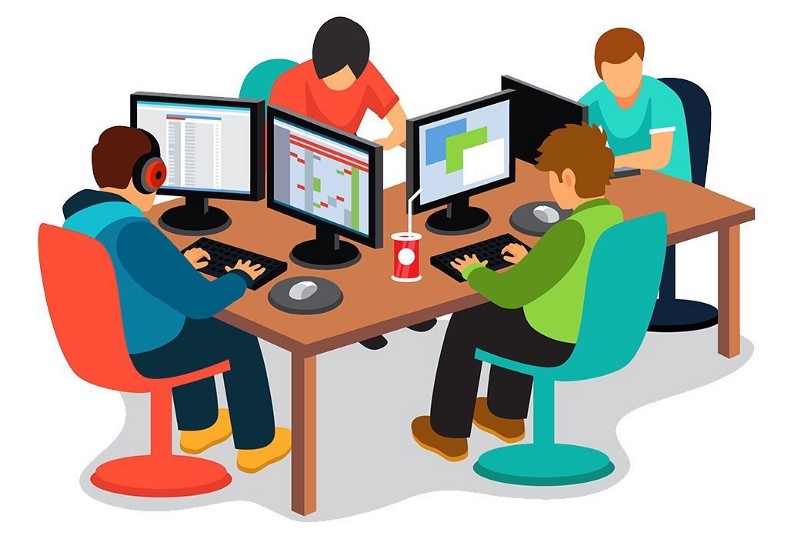Members of the same development team that are located at the same physical location where face-to-face collaboration among the team members is possible and practiced.
Colocation is useful for meetings that require close listening, such as design discussions. It is also handy when new employees are training and need some amount of hand-holding or encouragement. Whiteboard is highly effective for colocated team but can be managed with online tools as well.
Many people have forgotten what it’s like to work with a colocated team and to experience the increased production involved. Most people appreciate the concept, but might not understand the underlying principles. Here are a few benefits of a colocated team:
- Increased speed and effectiveness of face-to-face communication, especially through kinetics, voice tonality, facial expressions, and so on.
- Ease of using simple tools for planning and communicating — like whiteboards and sticky notes.
- Ease in immediate clarification of questions. Understanding what other members are working on.
- Ease in supporting other team members in their tasks. Cost savings due to decreased lag times and fewer misunderstandings that lead to defects or wasted work.

Statistical Evidence
The value of face-to-face communication shouldn’t be underestimated. Albert Mehrabian, Ph.D. and professor emeritus of psychology at UCLA, proved the following the statistics evidence for supporting the benefits of colocated team:
55 percent of meaning is conveyed through body language and facial expressions.
38 percent of meaning is paralinguistic (conveyed by the way we speak).
7 percent of meaning is conveyed in the actual words spoken.
Other Recommended Scrum Articles
Members of the same development team that are located at the same physical location where face-to-face collaboration among the team members is possible and practiced.
Colocation is useful for meetings that require close listening, such as design discussions. It is also handy when new employees are training and need some amount of hand-holding or encouragement. Whiteboard is highly effective for colocated team but can be managed with online tools as well.
Many people have forgotten what it’s like to work with a colocated team and to experience the increased production involved. Most people appreciate the concept, but might not understand the underlying principles. Here are a few benefits of a colocated team:
- Increased speed and effectiveness of face-to-face communication, especially through kinetics, voice tonality, facial expressions, and so on.
- Ease of using simple tools for planning and communicating — like whiteboards and sticky notes.
- Ease in immediate clarification of questions. Understanding what other members are working on.
- Ease in supporting other team members in their tasks. Cost savings due to decreased lag times and fewer misunderstandings that lead to defects or wasted work.

Statistical Evidence
The value of face-to-face communication shouldn’t be underestimated. Albert Mehrabian, Ph.D. and professor emeritus of psychology at UCLA, proved the following the statistics evidence for supporting the benefits of colocated team:
55 percent of meaning is conveyed through body language and facial expressions.
38 percent of meaning is paralinguistic (conveyed by the way we speak).
7 percent of meaning is conveyed in the actual words spoken.

